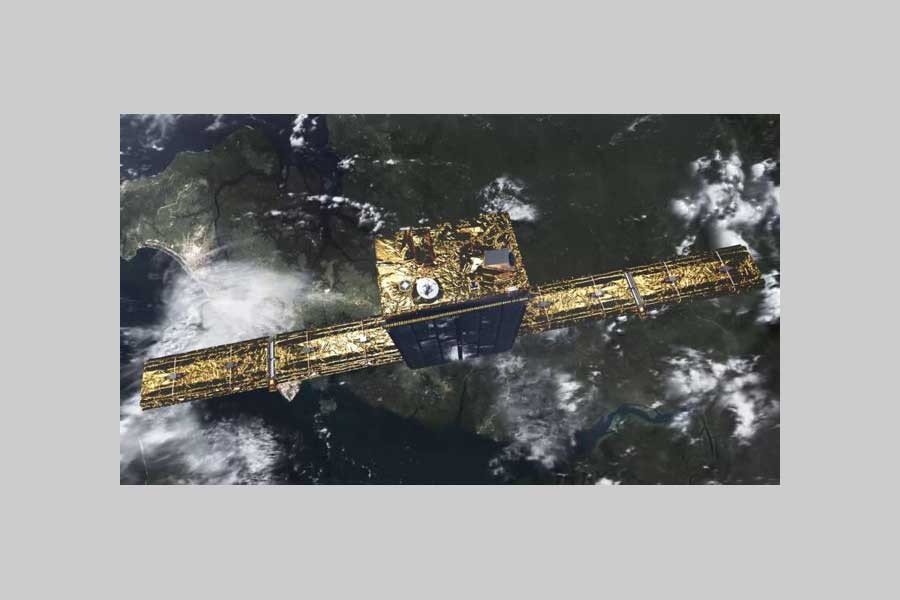The European Space Agency is to work with Finnish start-up ICEYE on ways to exploit its novel radar satellites.
ICEYE-X1 was launched in January - the first of multiple spacecraft that will go up in the coming years.
About the size of a suitcase, these are the world's smallest synthetic aperture radar satellites and cost a fraction of traditional platforms.
The Esa/ICEYE cooperation will focus on technology development and uses for the forthcoming constellation.
It will see future satellites - in particular, their radar antenna design - being tested at the agency's technical centre (ESTEC) at Noordwijk, Netherlands.
Esa's Earth observation headquarters (ESRIN) at Frascati, Italy, will also assist with calibration and validation of the ICEYE data.
The agency is keen to see how radar images from the mini-satellites can be drawn into the European Union's Copernicus programme, the broad system of services that depend on space data.
Areas of interest are likely to include maritime applications such as ship monitoring, and oil-spill and iceberg detection.
"This is how we can best help so-called 'New Space' companies," said Esa's director of Earth observation, Josef Aschbacher.
"They don't need us to build their radar instrument or their satellites; they're doing that themselves, and I would say faster than if we were involved. But there is a lot of engineering expertise here at Esa that is based on radar missions of more than 20 years," he told BBC News.
"We want to help ICEYE grow the market by testing and evaluating their value for Copernicus which is potentially a huge customer for them."
Esa's own radar missions currently in service include the Sentinel 1a and 1b spacecraft.
ICEYE-X1's bus, or chassis, which contains the radar instrument and spacecraft sub-systems, measures 80cm by 60cm by 50cm. Its radar antenna, after being unfolded in orbit, is 3.5m in length.
These dimensions are much smaller than those of past radar missions.
Like all New Space companies, the Helsinki-based outfit is exploiting the use of cheap electronics normally found in consumer products to reduce both the size and cost of its designs.
The first satellite has now taken hundreds of images from an altitude of 505km.
ICEYE is exploring how these pictures, and the analysis of them, could best benefit commercial partners.
Radar's great advantage is that it senses the ground in all weathers and at night.
ICEYE wants to couple this vision with high temporal resolution, meaning a single spot on the Earth's surface would be surveyed several times a day. Algorithms will scour the data to detect significant changes.
High-repeat requires a network of satellites, and ICEYE envisages perhaps 30 platforms in orbit.
Such a constellation could observe London or Paris, say, 15 times a day.
Spatial resolution is important, too. ICEYE-X1 has been returning 10m-resolution pictures, meaning they see any features bigger than that. But iterations of the instrument and the radar antenna are expected to bring the resolution down to 3m.
"ICEYE-X1 has far exceeded our expectations," said Rafal Modrzewski, CEO and co-founder of ICEYE.
"We did expect it to perform well, obviously; but for a first spacecraft from a start-up to perform so well - it's been a great mission and a really exciting period for us," he told BBC News.
ICEYE-X2 is scheduled to go up in August and ICEYE-X3 is aiming for a November launch.
ICEYE is working with a Polish company to part-manufacture ICEYE-X2.
For ICEYE-X3, the entire bus will come from York Space Systems, a Colorado, US, concern.
Mr Modrzewski said his company was trying to establish how much in-house building to do versus external sourcing.
"We're also looking into at least one more satellite because the sooner we get our constellation up and running, the sooner it will be providing our customers and partners with the capability. But we have to be careful. We don't want to launch too fast and then fail."


